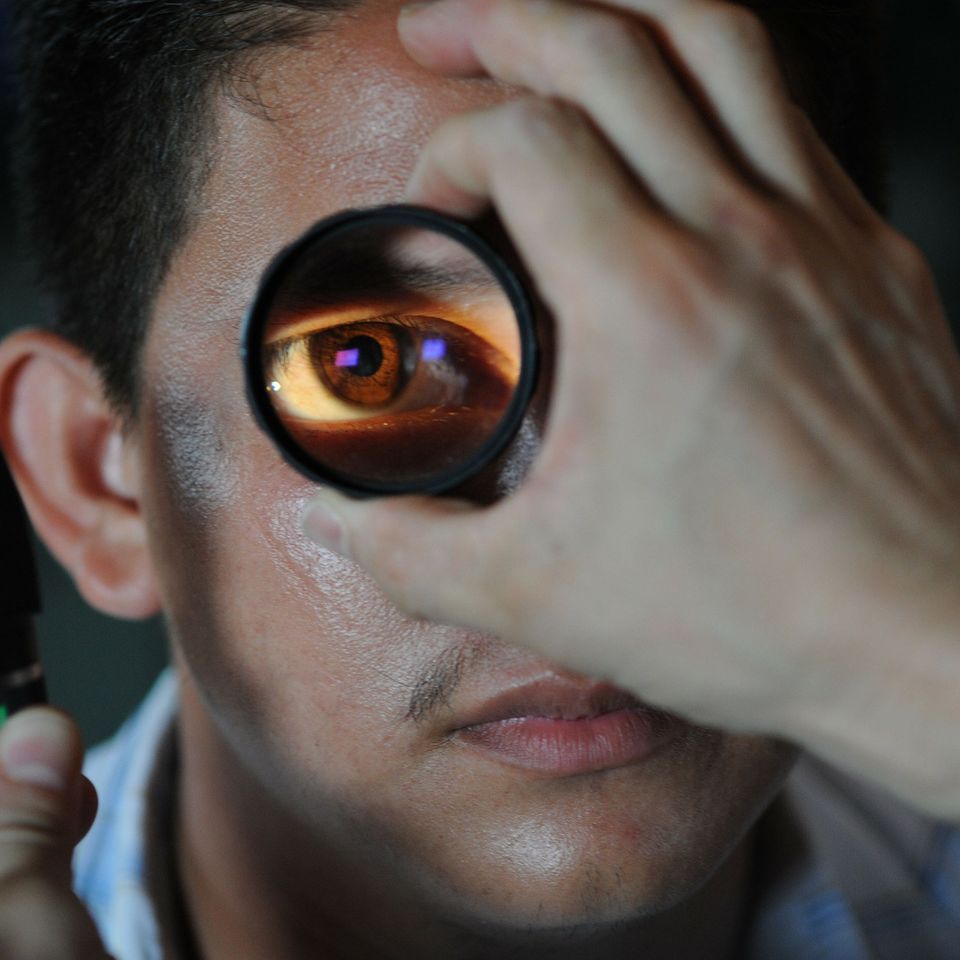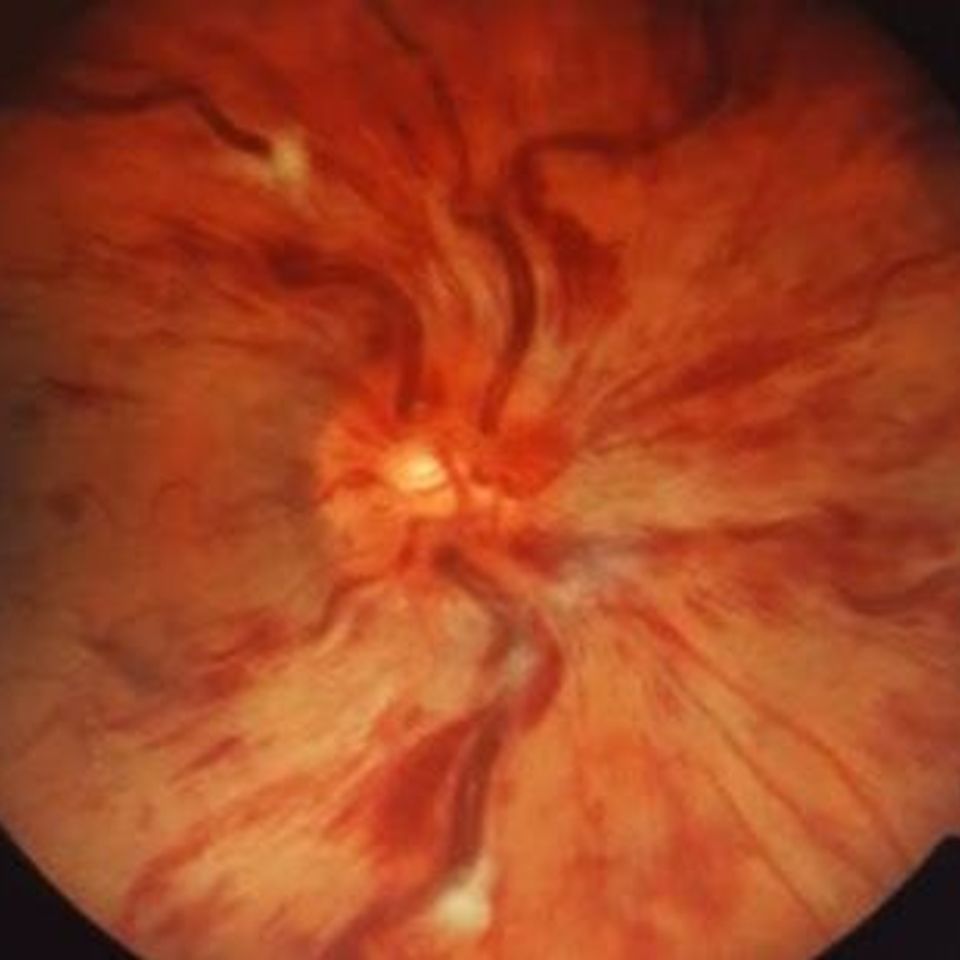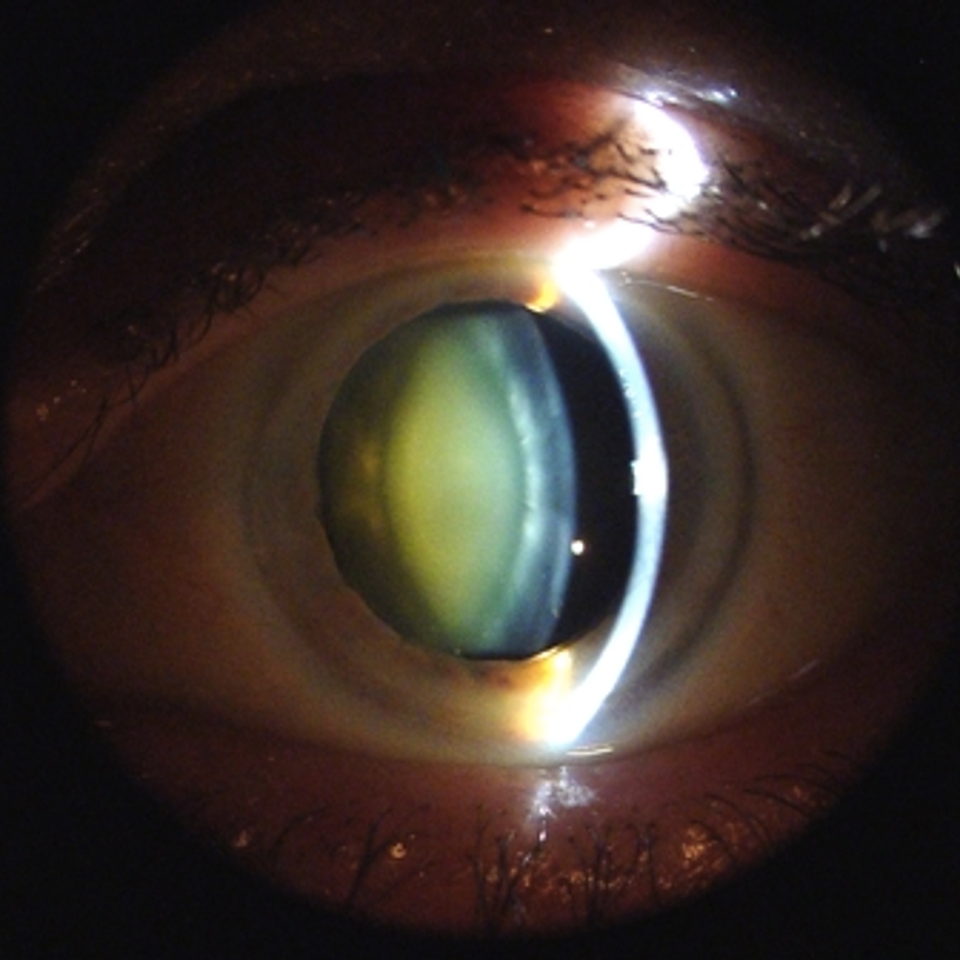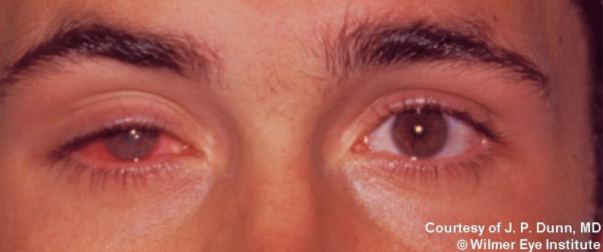Comprehensive Eye Exams
A comprehensive eye exam is recommended to be performed every year during school years, at least every two years in a healthy patient with no eye problems from age 18-60, and annually or more frequently after 60 or in patients at risk or those with eye conditions. In infants, exams are recommended at 6 months, one year, three year, and five years of age (American Optometric Association Guidelines). Dr. Komornik provides exams to patients of all ages (comprehensive starting at age 5, though).
Comprehensive eye exams include the following:
Comprehensive eye exams include the following:
- A careful medical and eye history
- Checking visual acuity (vision potential)
- Screening for glaucoma by checking the eye pressure, screening side vision/visual fields, and evaluating the optic nerve,
-
Slit-lamp microscope evaluation of the eyes to check the health.
- This part of the exam Dr. James Komornik will examine the eyes under a slit-lamp that has the capability to take a picture of the front and middle of the eye of different conditions (like cataracts, blepharitis, dry eye syndrome, etc). After, the patient can view the pictures of his or her eyes. Most patients love this aspect of the exam because they can actually visualize things that may be causing them symptoms. It also helps with the description of eye conditions and why certain treatment options will help better than others.
- Dilation or Ultrawidefield imaging is recommended every year. The disadvantage of traditional retinal screening photographs in place of dilation is that most of the camera’s just capture information of the central 16% of the back of the eye, leaving large portions left not examined. The back of the eye is where the retina (where light receptors are) and the optic nerve are located. Glaucoma, macular degeneration, retinal detachments, and signs of diabetes affecting the eyes can be visualized. With dilation or Ultrawidefield imaging these areas can be assessed much more thoroughly.
- Checking stereovision (depth perception) and color vision can also be performed if recommended by Dr. James Komornik.
-
If a patient chooses to be newly fit or to be re-evaluated for contact lenses, this can be performed at the comprehensive exam as well.
- Dr. James Komornik does contact lenses different than many eye care providers. He will give a patient two or more brands to trial that he knows will fit and be safe for the eyes, and allow the patient to compare them head on. Often we find that contact lenses are like Coke and Pepsi, although similar, someone may highly prefer one over the other. Contact lens evaluations include the initial fitting, trial lenses, and as many follow-ups required to get the prescription and material correct.
- A one-on-one glasses selection experience with our highly-trained licensed optician, Rialeigh Yoder. She can help patients with frame selections and is wonderful for picking the right frame to match head shapes, colors to complement skin tone and hair color, and materials to match patient’s usage.

Comprehensive Health Evaluation
This is one of the many parts to the exam that allows for an end-to-end full view of the ocular health.

Eye Health
Here is a retinal photograph of a vein occlusion which can occur in the back of the eye from high blood pressure or other ailments. If a patient has vision changes, it is the utmost importance to come in for an eye exam. Annual dilated eye exams should also be performed as signs of high blood pressure, diabetes, and other conditions can be caught first in the eye in some circumstances.

Eyeglass Selection
After the exam, an optician can help with Sea Eye Care's vast collection of unique frames.

Cataract visualized under slit-lamp microscope
Cataracts can be diagnosed at eye exams and classify the degree, monitor progression, and determine if treatment is needed.
source: www.foresteyesurgery.com.au/
source: www.foresteyesurgery.com.au/
Diabetic Eye Care
Diabetes is a disease where blood sugar levels rise. The blood sugar can rise because insulin (a messenger that tells the body to take the sugar out of the blood and in to organs and body tissue that need it to function) is not produced enough or at all, or because the body’s tissue has become resistant to insulin. The blood sugar, at high levels, forms sugar alcohols and other compounds which can damage the blood vessels. When blood vessels are damaged they leak, and the blood doesn’t get to where it needs to go. When the correct amount of blood doesn’t get to the right spot, oxygen and nutrients it is carrying doesn’t get to those tissues and they start to starve. When they starve they send signals to the body to increase blood flow. To increase blood flow the body tries to grow new blood vessels to increase blood and oxygen supply. Although the idea sounds good on paper, these new blood vessels are leaky and very poor quality so often makes things worse.
So where does an eye exam fall in to all of this?
The eyes are the only area in the body where doctors can directly visualize the impacts of blood sugar on blood vessels. Dr. Komornik may note areas of the blood sugar damaging the blood vessel walls (microaneurysms), leaky blood vessels (hemorrhages/blood leaking, exudates/fatty material leaking, and macular edema/fluid leaking), tissue that is not receiving enough oxygen (Cotton-Wool Spot/area of lack of oxygen, Diabetic Cataract/cataract caused by lack of oxygen and too much sugar), new blood vessels growing (neovascularization), and the negative impact of new blood vessels (retinal detachments, neovascular glaucoma, retinal hemorrhages/broken blood vessels). Primary Care Physician’s and Endocrinologists find an annual dilated eye exam extremely valuable in their treatment of patients with diabetes. In addition to blood sugar measurements (fasting blood sugar and HbA1C) and blood tests that look at how organs are functioning, these physician’s use diabetic eye exam findings as another piece to the puzzle in the management of diabetes.
At Sea Eye Care, Dr. Komornik provides diabetic eye exams and sends the notes to patients’ doctors the same day of the visit to ensure they are in the loop with the impacts of the blood sugar on a patient’s eyes.
So where does an eye exam fall in to all of this?
The eyes are the only area in the body where doctors can directly visualize the impacts of blood sugar on blood vessels. Dr. Komornik may note areas of the blood sugar damaging the blood vessel walls (microaneurysms), leaky blood vessels (hemorrhages/blood leaking, exudates/fatty material leaking, and macular edema/fluid leaking), tissue that is not receiving enough oxygen (Cotton-Wool Spot/area of lack of oxygen, Diabetic Cataract/cataract caused by lack of oxygen and too much sugar), new blood vessels growing (neovascularization), and the negative impact of new blood vessels (retinal detachments, neovascular glaucoma, retinal hemorrhages/broken blood vessels). Primary Care Physician’s and Endocrinologists find an annual dilated eye exam extremely valuable in their treatment of patients with diabetes. In addition to blood sugar measurements (fasting blood sugar and HbA1C) and blood tests that look at how organs are functioning, these physician’s use diabetic eye exam findings as another piece to the puzzle in the management of diabetes.
At Sea Eye Care, Dr. Komornik provides diabetic eye exams and sends the notes to patients’ doctors the same day of the visit to ensure they are in the loop with the impacts of the blood sugar on a patient’s eyes.

Signs of Diabetes Affecting the Eyes
Diabetes can cause leaky blood vessels visualized in the photograph. This is best seen with annual dilated eye exams. Even pictures like this one cannot replace an in-person exam with an eye care provider, because there are smaller, more subtle signs of the blood sugar affecting the eyes that the images can miss.
Pediatric Eye Exams
Dr. Komornik will perform comprehensive/full exams to kids starting at 5 years of age. If you have an infant that has a red eye or other urgent eye problem (swollen eyelid, tearing, etc), he will provide services for even younger ages.
Pediatric eye exams are extremely important because there are serious eye diseases or findings that, if not caught early and managed properly, could lead to a lazy eye, an eye turn, reduced central or side vision, or blindness. There are also, very rarely, certain tumors or signs of other serious general health conditions that can be caught early during pediatric exams and even save a child’s life.
The American Optometric Association (AOA) notes that one in four children suffer from some form of vision-related condition. The AOA guidelines recommend exams at 6 months, 1 year, 3 years, 5 years, and every year during school for childhood eye exams.
Eye conditions like strabismus (eye turn), lazy eye (amblyopia), convergence insufficiency (poor ability to turn eyes in to read), oculomotor dysfunction (poor ability to make eye movements) can lead to problems reading that can lead to issues and delays in learning in some cases.
Dr. Komornik works closely with pediatric vision therapists in the area and provides baseline testing, and follow-up care for these conditions.
Pediatric eye exams are extremely important because there are serious eye diseases or findings that, if not caught early and managed properly, could lead to a lazy eye, an eye turn, reduced central or side vision, or blindness. There are also, very rarely, certain tumors or signs of other serious general health conditions that can be caught early during pediatric exams and even save a child’s life.
The American Optometric Association (AOA) notes that one in four children suffer from some form of vision-related condition. The AOA guidelines recommend exams at 6 months, 1 year, 3 years, 5 years, and every year during school for childhood eye exams.
Eye conditions like strabismus (eye turn), lazy eye (amblyopia), convergence insufficiency (poor ability to turn eyes in to read), oculomotor dysfunction (poor ability to make eye movements) can lead to problems reading that can lead to issues and delays in learning in some cases.
Dr. Komornik works closely with pediatric vision therapists in the area and provides baseline testing, and follow-up care for these conditions.

Management of Eye Disease
Dr. Komornik has vast training in the medical management of eye diseases. This includes glaucoma, keratoconus, dry eye syndrome, digital eye fatigue, ocular allergies, and many more. The therapy can range from monitoring for progression, over-the-counter drops and products, prescription drops, prescription oral medications, and in-office medical procedures.
Emergency Eye Exams
At Sea Eye Care, we welcome walk-in emergency medical eye exams. After hours, we also have an emergency eye line for patients to call so that Dr. Komornik or his nurse can direct the patient on what to do. Sea Eye Care’s staff understands the stress and worry that can come along with certain eye and visual symptoms, so we strive to provide easy access to care and implement treatment plans as soon as possible to improve the outcome.
Some of the emergency eye symptoms seen at Sea Eye Care:
Some of the emergency eye symptoms seen at Sea Eye Care:
-
“Pink Eye,” or any red, painful, irritated, burning, itching, or watering/discharge filled eye.
- This can be as mild as a bacterial conjunctivitis/pink eye that can be treated to resolve within a day or two of eye drops to as severe as a corneal ulcer or other more daunting condition that may require a more extensive treatment program. Often, these symptoms are seen in patients who wear contact lenses, and there is excellent treatments for that as well.
-
New “floating spots” seen in a patient’s vision. They can appear as grey dots/lines/waves/shapes that abstract aspects of vision.
- This can be as mild as a waterpocket that formed in the jelly inside of the eye to as severe as a retinal detachment.
-
“Flashing lights” seen in a patient’s vision. It can appear as streaks of light, small flashes of light at the edge of the vision, or colorful lights that change in shape or size.
- Like the floating spots, can be mild from changes in the jelly in the eye to as severe as a retinal detachment.
-
Foreign Bodies in the eye. This is often from grinding metal or doing woodwork. If a patient was doing a task at risk for foreign bodies in the eye (even when wearing proper eye protection), and the eye gets red afterwards or painful or vision changes, the patient should be seen right away.
- The only real fix for a foreign body in the eye is foreign body removal under the magnification of a slit-lamp microscope by an optometrist or ophthalmologist. Afterwards, prescription drops or ointments may be required.
-
Corneal abrasions are when a patient gets a scratch in his or her eye. It can lead to pain, light sensitivity, foreign body sensation, and tearing.
- The cornea, thankfully, heals very quickly. Corneal abrasions often require a procedure that makes the edges of the scratch more uniform to promote healing, a contact lens placed on the eye to act as a bandaid, and prescription eye drops to prevent infection.
- Sudden vision loss or extreme eye pain are eye emergencies that a patient should always call our office immediately so that a patient can be scheduled as soon as possible or directed on where to go per Dr. Komornik’s judgement.
Contact Lens Evaluation and Fittings
At Sea Eye Care, Dr. Komornik performs soft, rigid gas-permeable, scleral, and orthokeratology contact lens services.

